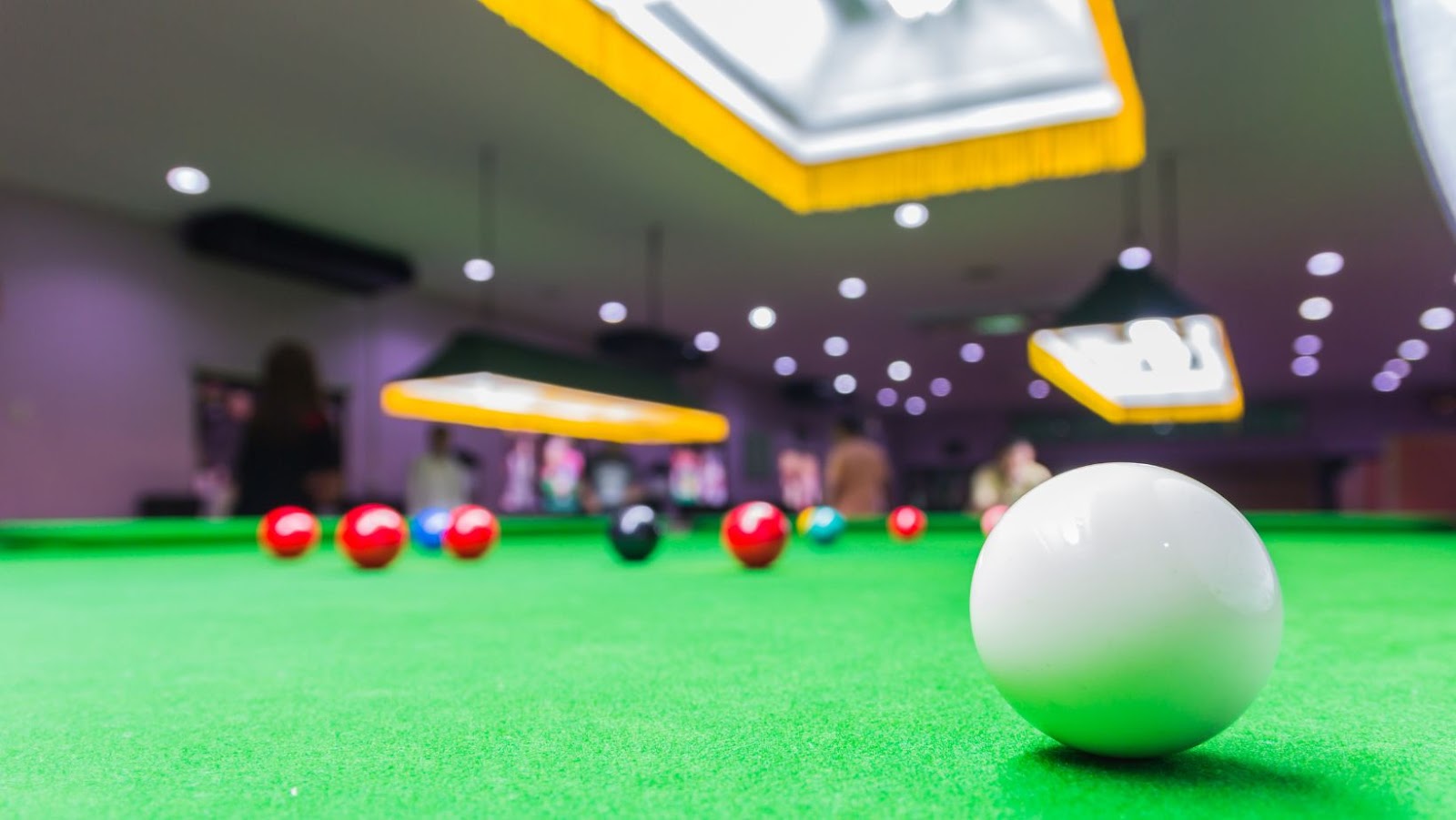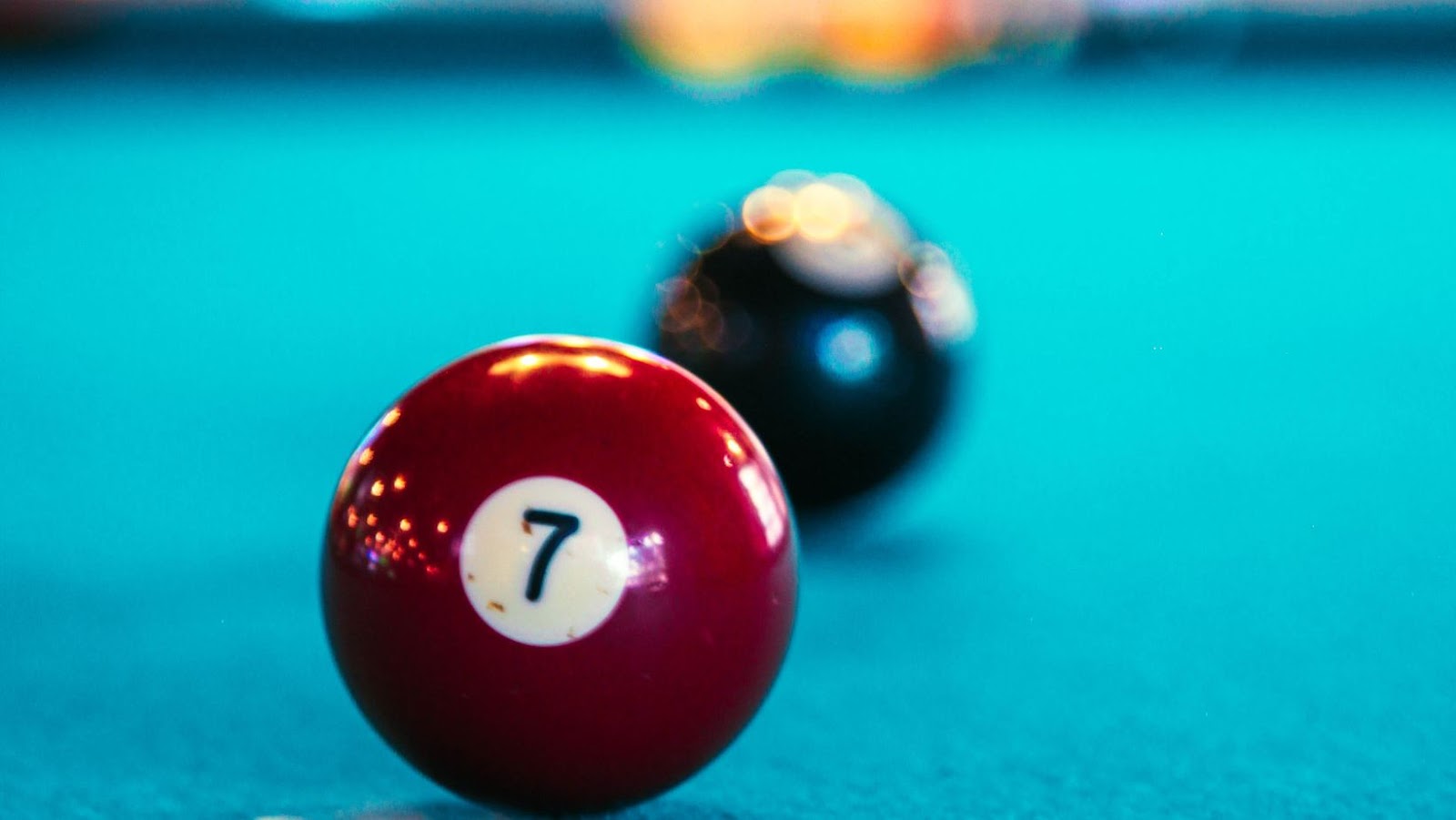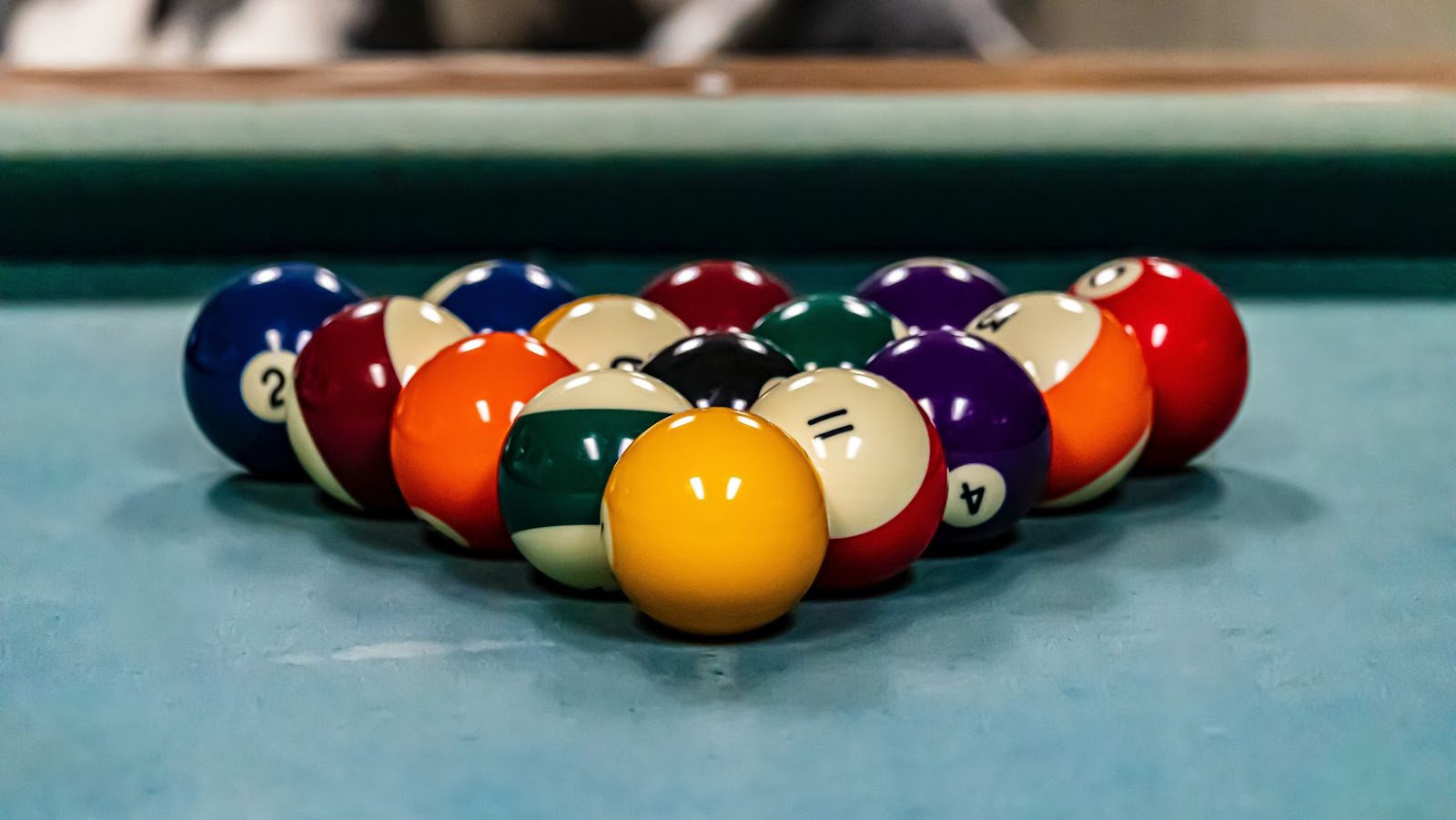Are you confused between a pool ball and a snooker ball? You’re not alone! Let us clear the air and help you understand the difference. In this article, we’ll explain what a snooker ball is and how it differs from other types of billiard balls.
What is a snooker ball
Snooker is a cue sport played on a large baize-covered snooker table. The game is composed of 15 red balls, 6 colored balls (yellow, green, brown, blue, pink and black) and one white cue ball. The aim of the game is to score points by potting the colored balls consecutively as per their sequence within the set rules. Points are calculated according to the value assigned to each ball type in accordance with the stroke being played. Although there are many variations of snooker, the simplest and most commonly used format requires players to use the white cue ball on each shot in order to pocket those shots that were not potted in previous turns. The six-colored snooker balls are colored differently so that they can be easily identified by players during their turns: yellow (2 points), green (3 points), brown (4 points), blue (5 points), pink (6 points) and black (7 points). A player continues until all fifteen reds have been potted, then needs to re-pot at least one color prior to claiming a frame-winning mileage. This end game provides an opportunity for a player or team opposing players advancing ahead on points during successive turns from having a chance at making a comeback victory or draw against those who seemed unstoppable the first time around!
Types of Snooker Balls
Snooker is a cue sport played on a large green table that is covered with felt and surrounded by six pockets. The game requires players to pot these snooker balls by hitting them with an extended cue stick. Each of the balls in the set of snooker balls has a unique color and size, making it easy to identify which ball should be hit and how much effort should be applied when doing so. The standard set of snooker balls includes 22 object balls: 15 that are red-colored, six that are colored (yellow, green, brown, blue, pink and black), and one white cue ball. Of the colored object balls, each carries a point value between one and seven (1 yellow being 1 point; 2 greens being 3 points).

Red Balls: Standard snooker games involve using 15 red-colored object balls numbered from one to 15 which each carry no points but assist in setting up breaks or helping to clear baulk colors required for a frame-winning break. They can be repeatedly used until no other ball is on the table or can only be potted once depending on the rules agreed upon for a given match.
Colored Balls: The remaining 6 snooker balls carry different point values and have distinct colors including yellow (1 point), green (3 points), brown (4 points), blue (5 points), pink (6 points) and black (“the money” ball awarded at seven points). Each of these colored object balls is placed in its respective spot around what is known as the “D”.
History of Snooker Balls
Snooker is a classic and popular cue sport, played on a special cloth-covered table by two or more players using cue sticks, small discs called snooker balls, as well as a pyramid-shaped set of colored balls. The game has been known since the late 19th century and is believed to have evolved from billiards games, such as English Billiards.
Snooker balls originated in the English town of Billericay at the turn of the 20th century. Manufacturers produced smaller sized billiard balls to fit within snooker tables during this period. The earliest mention of this type was in an 1892 article published by Ernest Wells titled “The laws and regulations of Snooker” where he outlined the rules of snooker at the Billingswood Club in London.
To this day, professional grade snooker balls are still made to exacting standards. A specially formulated resin is used for maximum performance on cushion surfaces and for durability against chalk marks which can otherwise leave permanent signs on white spheres over time when playing snooker. Professional quality sets are often hand crafted by specialist companies for players competing in tournaments across the world; these include full size 22mm diameter solid colored spheres numbered 1 to 15 (black) plus a red ‘spotted’ ball with white diamond spots that carries higher point values than other standard colors to replace it once pocketed during play.
Materials Used in Snooker Balls
Snooker balls are traditionally made out of phenolic resins and other polymer materials that offer qualities such as high levels of hardness and strength, perfect for withstanding the forces of a snooker table. The resins are highly polished to ensure no flaws in their surfaces, which are usually patterned with dots or lines to improve their gyroscopic properties. The standard size of a snooker ball is 2 1/16 inches, which roughly amounts to 52.5 millimeters in diameter. The size has been regulated by the International Billiards Council since 1973, although these sizes have been used dating as far back as 1906.
Unlike most billiards balls, snooker balls are made with a composition that gives them noticeably different playing characteristics than those found in pool or carom billiards. Snooker cue balls tend to be slightly heavier compared to the object balls they collide with since the effect is multiplied at impact due to player and equipment advancements over time such as improved grip and longer cue sticks .
Manufacturing of Snooker Balls
Snooker balls are made from a resin compound that is formed into round shapes. This material is then modeled, cut and polished to a consistent size and shape by CNC machinery. Each snooker ball has an individual stamp with numbers and symbols in the form of inlays or transfers applied to each one. This gives each ball its own identity and allows it to be easily identified during play.
To ensure evenness during the manufacturing process, snooker balls are subject to rigorous quality control checks during production, checking factors such as weight, size, balance and density. During the final stages of production, each snooker ball is sprayed with a coloured powder coat paint which bonds with the more pliable outer layer of the ball material for easy cleaning ability and longevity. The standard set of snooker balls includes: fifteen red balls numbered 1-15; six different colour balls numbered from 4-15; one white cue ball; one black 8 ball; plus four other ‘eyes’ white balls for special purposes during play.
Benefits of Snooker Balls
The game of snooker is centered around the use of snooker balls, which are traditionally made from Aramith Phenolic Resin. Snooker balls come in a variety of sizes, weights, and colors and are designed to help players rebound off edges while maintaining a smooth trajectory of movement.
The large size of the full complement of 15 snooker balls makes it beneficial for players to accurately choose their shot selections. Additionally, the different colored snooker balls require an understanding of how they interact with other objects on the table.
The benefits of snooker balls include their high durability due to their hard phenolic resin structure as well as their resistance to environmental effects such as humidity or high temperatures. This greatly increases their lifespan and players can expect to have snooker games played over decades with no breaks from having to buy new sets due to degradation. The materials used also allow for better accuracy when calculating shots compared with older types of balls made from alternative materials such as ivory or plastics that demonstrate lower accuracy potentials due to bounces not playing out predictably.

Other advantages to using snooker balls include requiring a higher level of strategy than other traditional billiard ball sets given the extra color options available on the table in combination with the close proximity between each ball in comparison with larger average ranges found on a pool table; requiring even fitsmith aim placing and adjustability concerning cue strength allowing for greater finesse-type shots when necessary.
Ultimately, by taking advantage of these key benefits and techniques available through playing with this type of ball set up, one may find themselves becoming increasingly more strategic about each shot taken in order for them to attain victory against potential competing opponents whether it be on a local or more professional scale.
Care And Maintenance of Snooker Balls
Good care and maintenance of snooker balls is essential for optimal performance. Properly caring for your snooker balls will help them to last longer, reducing the need for replacement. The following outlines the appropriate steps for cleaning and caring for your snooker balls to ensure the best possible experience:
Cleaning Snooker Balls To clean snooker balls, use a soft cloth and a mild detergent. Standard soap and water is fine, however many players prefer to use special products designed for cleaning billiard equipment. If using soapy water, do not submerge the entire ball into it; instead, remove any dust particles with a damp cloth before wiping down each individual ball with warm soapy water. This should be done periodically throughout their lifetime in order to keep them pristine condition.
Polishing Snooker Balls Periodically polishing your snooker balls can help to maintain their cosmetic appearance and reduce the chances of uneven wear on their surfaces. To polish your snooker balls, use specialized polishes that are specifically designed to be used on pool or billiard equipment such as Aramith Billiard Ball Polish or Aramith Magic Ball Cleaners. Apply these by hand or with a cloth or buff pad and then buff off with a dry soft cloth in different directions than you applied it. This should be done every six months at minimum; more often if necessary based on playing conditions such as heavy-use home gaming tables versus light-use at club play tournaments.
Storage of Snooker Balls To maximize lifespan of your snooker table’s balls, store them properly when not in use. Generally this means storing them in an appropriately sized billiard ball rack or bag that is kept in a dry location away from direct sunlight so as to not overheat them. If possible try to avoid extended periods above 85F/30C as that can cause permanent damage over time.
In conclusion, snooker is a cue sport that requires great levels of skill and understanding of the game. Snooker is characterized by its use of twenty-two colored balls in addition to one white ‘cue’ ball. The colors in a typical set of snooker balls range from yellow through to black, and are numbered from 1-15 (the yellow being number one) with the colors having their own points associated with them.
Certain shots come with extra points for having a colored ball potted such as the red being worth one point each, or pocketing two consecutive colors for double or triple points depending on agreement between players beforehand – often referred to as ‘full snookers’.
Snooker is an entertaining and rewarding game that allows players to challenge themselves and offers something for everyone regardless of level or skill.
